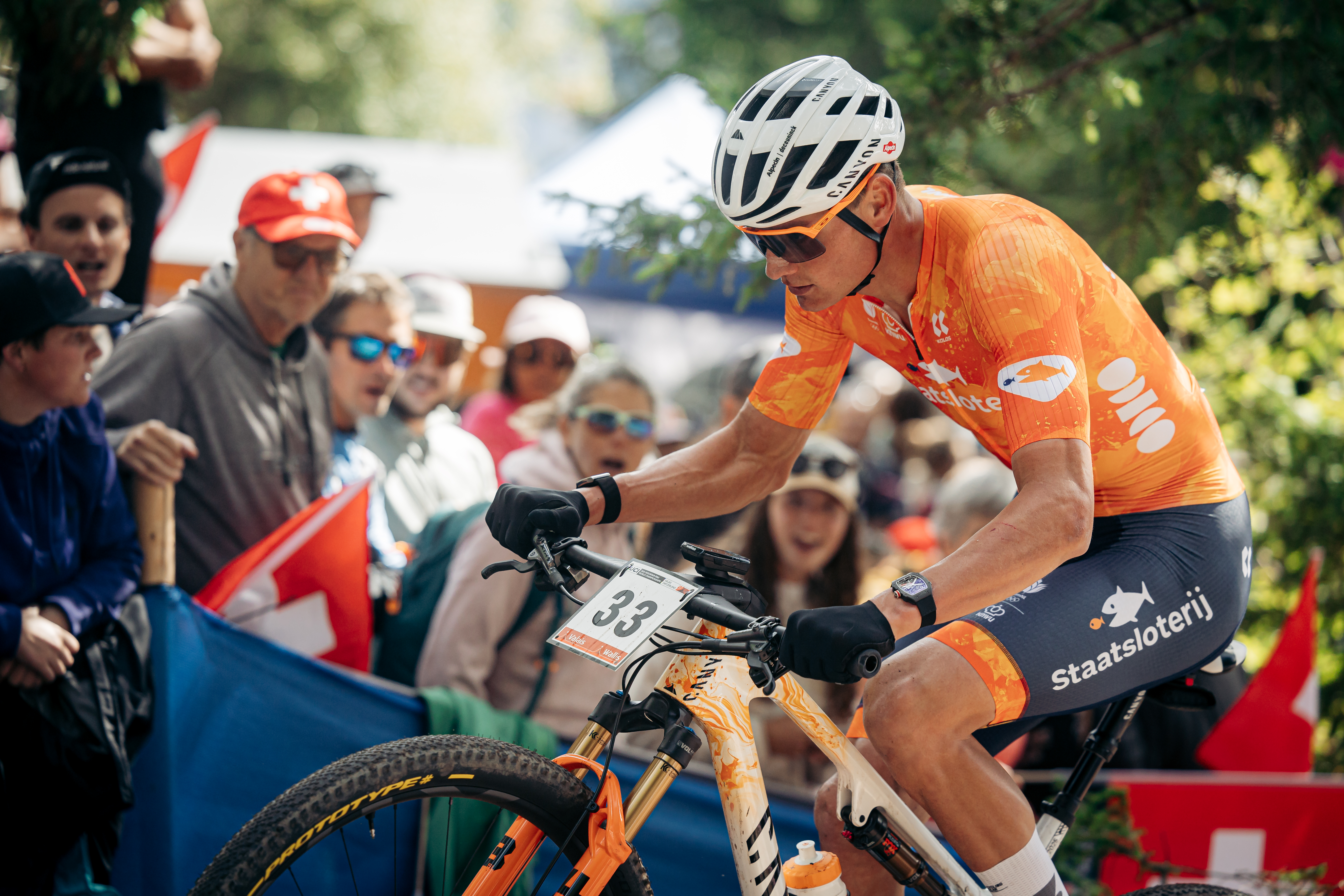The Yellow Armada: How ONCE shook up pro cycling
Procycling magazine looks back at how the Spanish squad rocked the established order and took the fight to Indurain's Banesto
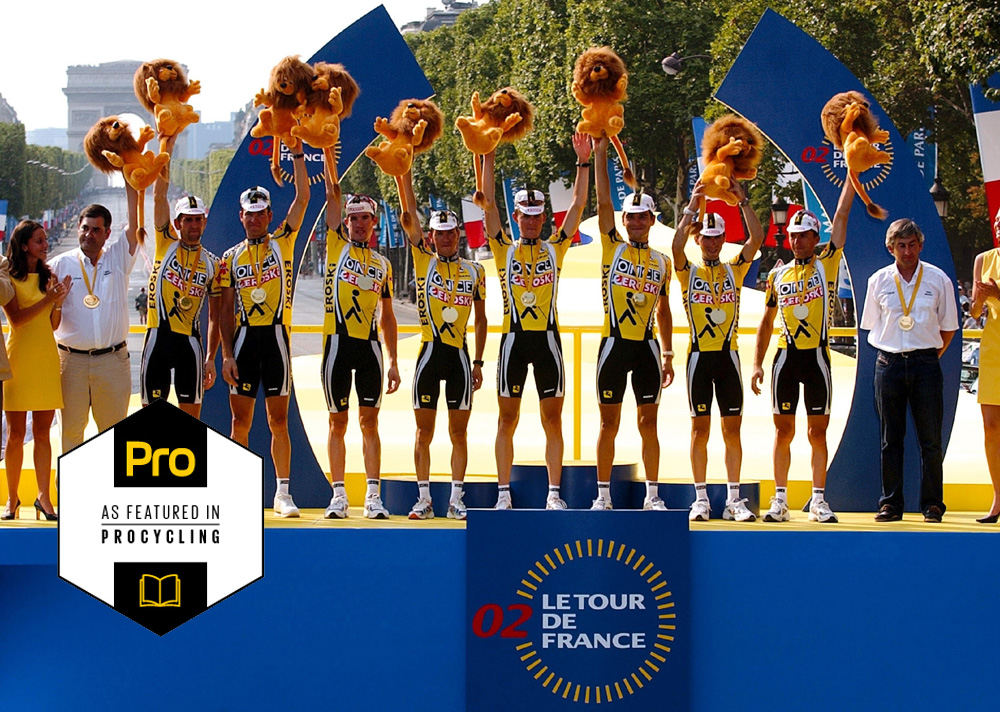
In the 1990s, Spanish squad ONCE shook up the established racing hierarchy and traditional way of doing things, before fronting a serious challenge to rivals Banesto at the Tour de France. Procycling looks at how they did it
This article first appeared in Procycling magazine issue 256, 2018
Every great team, at some point in their history, has a breakthrough moment. It’s not necessarily a win. It is more likely to be the point in a high-profile race where that squad works together and makes an impression as a unit, becoming more than the sum of its individual parts. In the case of the Spanish team ONCE, sponsored by the country’s national blind charity, that moment came in the 1992 Tour de France on stage 15 to Saint-Étienne as the race left the Alps and moved towards Paris.
The Col de la Croix de Chaubouret, the decisive ascent before the finish, was where ONCE made their mark. Here, the men in pink – a change in strip from their usual yellow outfits - made a concerted attempt to dislodge the wearer of the green jersey, Johan Museeuw. The goal was to enable Laurent Jalabert to take over in his stead; in particular, the climb saw the Australian domestique Neil Stephens lift the pace time and again, whittling the group down as Museeuw struggled at the back.
That was yet another skirmish in a battle that had lasted since Jalabert had won a dramatic stage into Brussels nine stages earlier; the pair had swapped the tunic since then, but here was ONCE’s opportunity to steal a decisive advantage. And so it proved. in St Etienne Museeuw was nowhere, Jalabert took fourth and snatched the green jersey; he would then wear it to Paris, the first Frenchman to do so since Bernard Hinault in 1979.
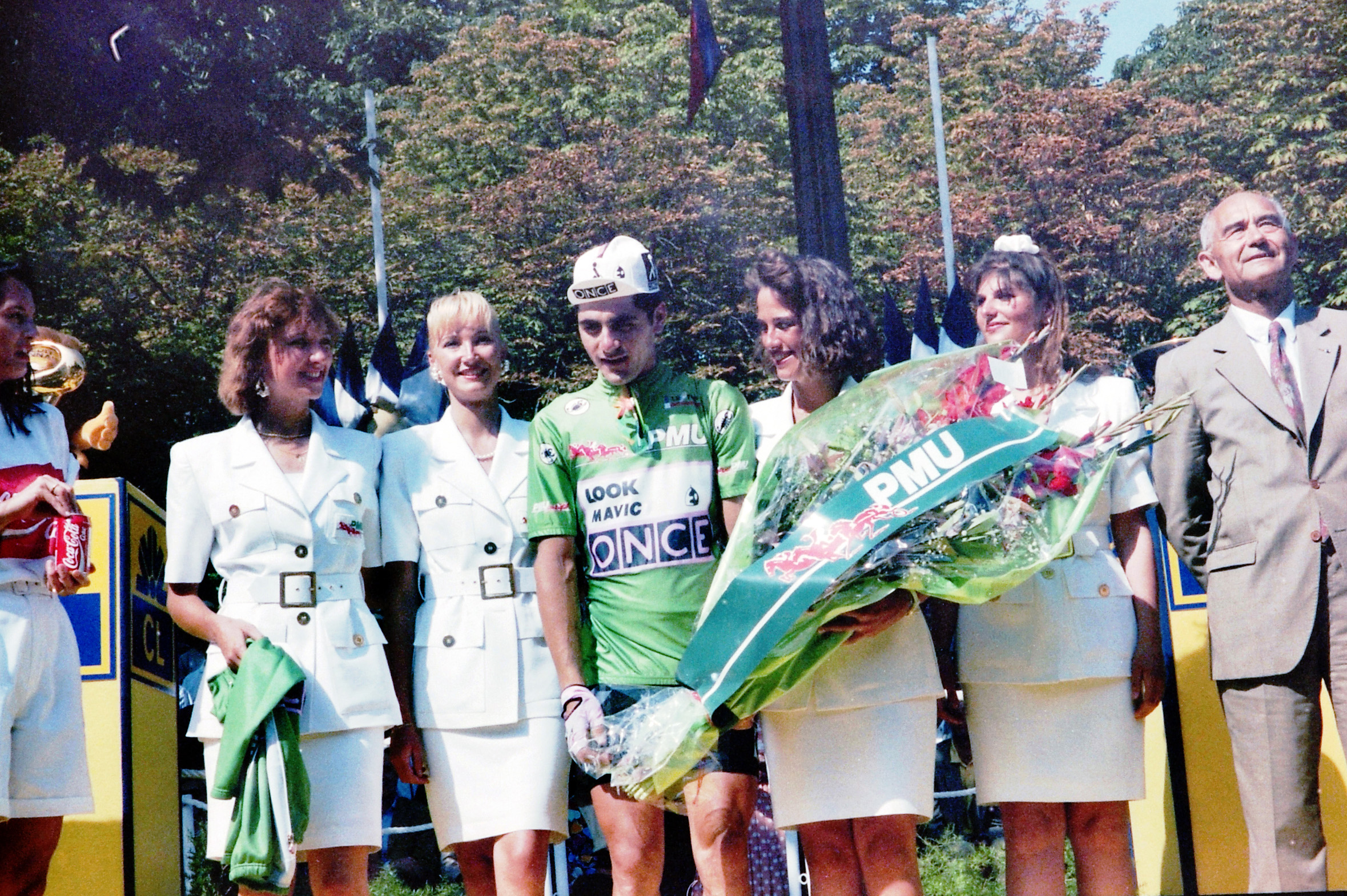
The green jersey in the 1992 Tour was not ONCE’s first big victory. Far from it. In 1991, the team had won the Vuelta with an unknown, Melcior Mauri, but that could be dismissed as a freak event. The team also won a brace of stages back-to-back in the Tour in 1990 with Eduardo Chozas and Marino Lejarreta, and Jalabert’s 1992 stage win in Brussels had been a classic. On a day of rain and cobbles, he won out of a four-man break which included Greg LeMond and Claudio Chiappucci.
But that moment on the Croix de Chaubouret was different; it was not an individual feat. It was the point when ONCE as a unit began to stamp their authority on the Tour, the biggest arena in cycling, and doing so in a race dominated by the Spanish great of the moment, Miguel Indurain. It was an assertion that there was another Spanish squad in the race besides Indurain’s Banesto, one that had a different way of racing. From then until their disappearance in 2003, ONCE would be a constant presence on the Tour.
The latest race content, interviews, features, reviews and expert buying guides, direct to your inbox!
I’d divide the great cycling teams under two headings. The first are the dynastic squads, the ones that keep rolling sponsors over, under largely the same management: think Peter Post’s Raleigh and Panasonic; Giancarlo Ferretti’s Bianchi, Ariostea, MG and Fassa Bortolo; Cyrille Guimard’s Renault, Système-U and Castorama. Currently, cycling has Deceuninck-QuickStep, who can trace their roots to Capri Sonne in the early 80s – though the current incarnation of the team dates back to 2003 – and Movistar, who began as Reynolds, also in the early 80s, and were best known as Banesto.
The other category is the mould-breakers, teams that do new things, bring new ideas and race in a different way. Team Sky met that billing, and Garmin fitted that mould in their early years. Guimard and Post’s teams were radical innovators too.
ONCE stand out here. This was a team sponsored by a charity, that wasn’t run by a former professional cyclist, that raced in a particular way, and that paid immense attention to the items that some teams took for granted: bikes (don’t all laugh at once), transport, and kit. Those yellow jerseys featuring the person with a stick stand comparison with cycling’s most iconic designs.
The Yellow Armada
The ONCE story began in 1989, when an unknown coach named Manolo Saiz was given the task of creating a cycling team sponsored by Spain’s national association for the blind. Organización Nacional de Ciegos Españoles was founded in 1938, and enjoys a state monopoly to run a national lottery, with tickets sold from the ubiquitous street kiosks that feature the body’s logo: that person with the stick.
Over the years, it has turned into a sprawling organisation that works with people with disabilities, including deafness. It offers educational services and employment within a huge range of service industries – hotels, shops, health centres – that employ tens of thousands of people.
This was not your average cycling sponsor, and Saiz was far from the usual ex-pro who jumps in behind the wheel of the team car. He was young: only 30. He had been a poor amateur racer, because, he said, he did not know how to suffer. He had then gone on to take a coach’s qualification, becoming trainer of Spain’s junior and amateur squads. Along the way, he had studied under the East German track coach Wolfram Lindner. The connection with ONCE came about when he took charge of the association’s team of tandem pilots with blind stokers.
Saiz later said that his fellow directeurs sportifs often didn’t bother to give him the time of day; he never truly fitted in. ONCE was different to the other squads, he claimed, "because my team has a soul." That is backed up by the Australian Stephen Hodge, who joined ONCE in 1990 along with another key signing, the veteran Marino Lejarreta, and said: "Manolo was different. He established a close, almost familial atmosphere among the guys. He was like an older brother rather than a boss."
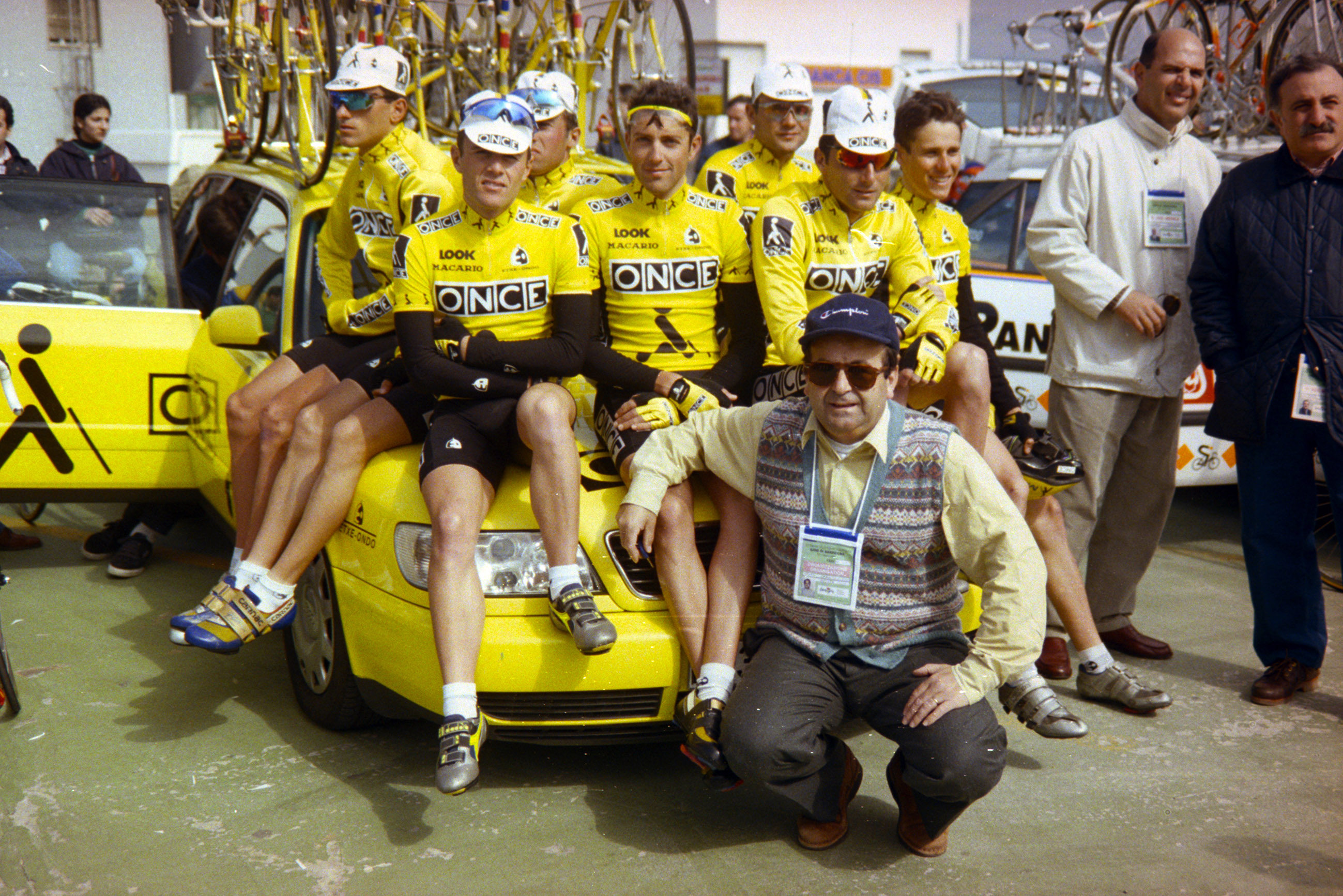
The ONCE boss also had new ideas when it came to coaching. To start with, Lindner had convinced him that most professional cyclists didn’t train hard enough. Jalabert was another early signing, in 1992, but he didn’t enjoy his early years at the team. "I told him, you are going to suffer a lot," said Hodge. "He struggled for six months with no results, then began to have doubts. But then the results came." Hodge recalls Saiz being "hands-on" with the riders’ training, and prescribing gym work, a lot of it, and strength intervals, again relatively new thinking.
Jalabert was probably the most important signing of Saiz’s career, along with the myopic Swiss Alex Zülle, who the DS refused to hire initially because he wore earrings. The pair gave Saiz his biggest wins: three victories in the Vuelta; 1995 for Jalabert, 1996 and 1997 for Zülle. By then, the team was known as the ‘Yellow Armada’.
"In the Vuelta, there is always one stage where we come down off a hill on to a long flat with crosswinds and time to make a difference in to the finish," said Hodge. "Everyone knows what is going to happen, yet we always managed to blow the race apart in echelons. That is where we got the nickname."
ONCE were a distinctive presence for other reasons. When they won the Vuelta, around 100,000 members of the organisation would be bussed into Madrid to watch the final stage, all wearing yellow t-shirts. The charity connection meant that the team used ONCE facilities, such as hotels across Spain, and riders visited the schools and enterprises dedicated to helping the blind.
"When the going got tough you only had to consider how life was for all the Spanish blind, deaf and mute people who we were representing in the seeing world," said Hodge.
On the road, the Yellow Armada were expected to sow mayhem and panic. At stage starts and finishes, their buses were distinctive. Well ahead of trend, Saiz acquired a second bus for the mechanics and soigneurs, partly to get round the fact that trucks were not allowed to drive on Sundays; using buses enabled personnel and machines to get home earlier.
There were special climbing bikes – by Klein, but badged as Look – with lightweight accessories drawn, in some cases, from mountain biking – and Paris-Roubaix bikes, at a time when some teams still believed thick steel was acceptable.
The rivalry with Banesto was inevitable, partly because of ONCE’s relative novelty, partly because Saiz was not part of the old boys’ club, but also because of the contrast in ethos. ONCE raced everywhere with the same aggression, be it a small Spanish race or the Tour. Banesto relied on Indurain’s time trialling and presence, and were quite happy to hang their season entirely around the Giro and Tour. Ironically, it was the new kids in yellow who harked back to earlier Spanish heroes, such as Luis Ocaña and Pedro Delgado.
Putting Indurain on the ropes
If ONCE had a finest moment, it came in the 1995 Tour, when the team came within an ace of depriving Indurain of a fifth consecutive win. 1994 had been fallow in the Tour after Jalabert’s horrific crash at Armentières – he won seven stages in the Vuelta that spring and was expected to win the Tour’s green jersey again – but in 1995 the Frenchman was back, several kilos lighter after losing muscle while recovering from the crash. That year he won Paris-Nice, Milan-San Remo, and Flèche Wallonne. Zülle was in form, too, having won the Tour of the Basque Country and Vuelta a Valencia.
The team’s initial plan was to monitor Indurain on the tough stage through the Ardennes into Liège, but only Johan Bruyneel was able to stay with ‘Big Mig’ when he made what turned out to be a key attack on the Côte des Forges.
The following day, Indurain put in a typical time trial performance to take the yellow jersey. After the Tour transferred south on stage 9, Saiz sent Zülle on the attack on the opening Alpine stage to La Plagne. Indurain counter-attacked, splitting the race to pieces, but by the end of the climb, Zülle was his only challenger, 2:27 behind.
The most dramatic day of that Tour was the now-legendary stage 12 from Saint-Étienne to Mende. By now, Indurain’s domestiques were on their fourth day controlling the race and they were fatigued. To compound that, they were all at the back of the peloton in the neutralised zone.
The epic that transpired that Bastille Day was not a planned affair. ONCE intended to go on the offensive, as the stage included a hill early on which Saiz hoped would put Banesto on the back foot. As it was, the attacks were intense, from riders looking to take the win. By the time Jalabert bridged to Gewiss’s Dario Bottaro after 27km, the field was in tatters, and Banesto’s domestiques were scattered. The gap remained around 30 seconds for some 20km, enabling Saiz to send riders across to back up Jalabert.
Zülle had a knee problem so it fell to Mauri, and later on Stephens bridged as well. When Stephens attacked for the first time, Indurain chased the domestique. With the Australian back in the fold, another ONCE rider, Bruyneel, went clear. Again, it was Indurain who rode him down. The yellow jersey was alone, and was having to make efforts.
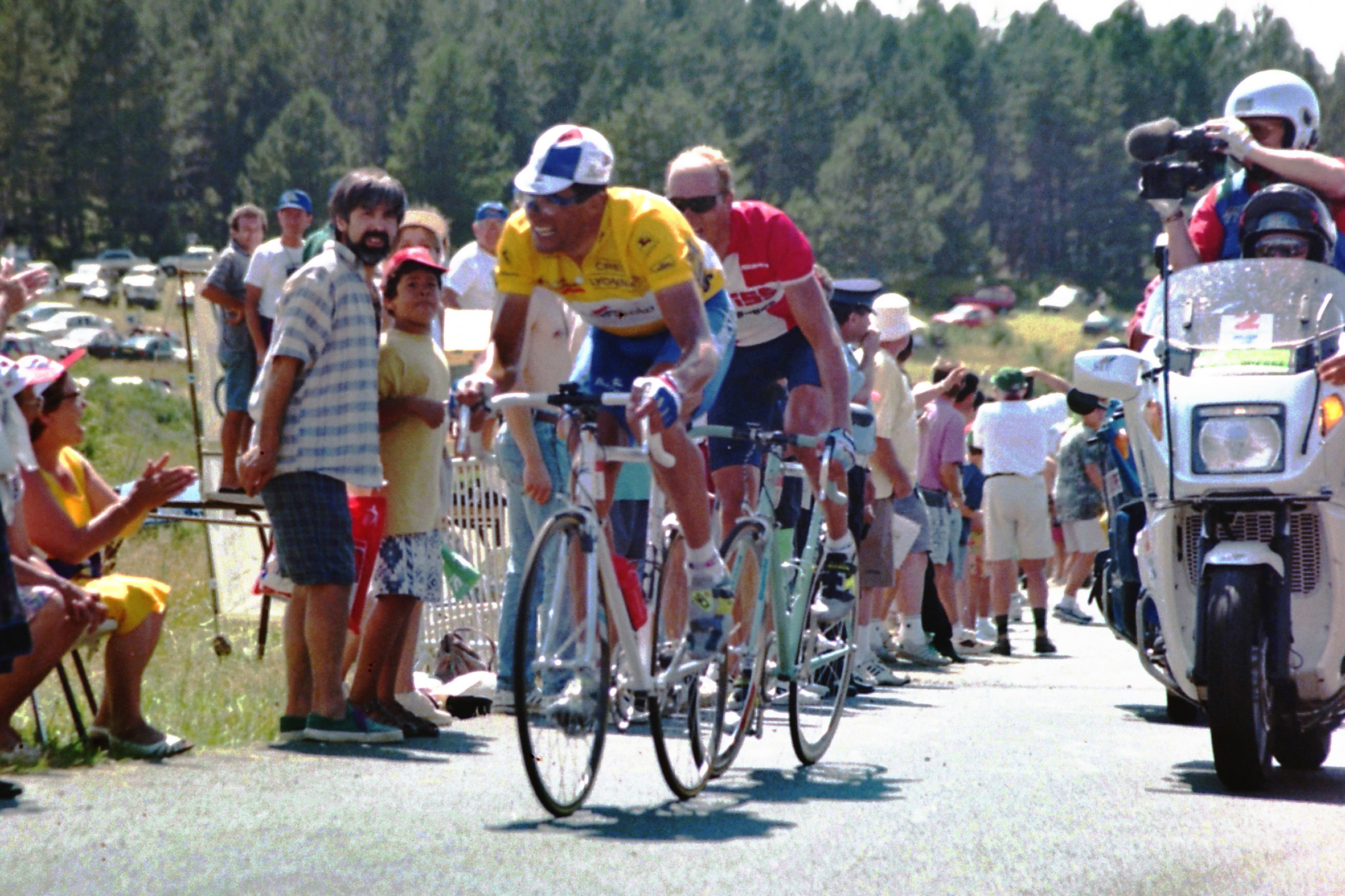
"As a collective we could have won the Tour that day in Mende," Saiz told Alasdair Fotheringham in Relentless, his account of Indurain’s life. "It was the ideal strategy to beat Indurain: isolate him and attack."
It was the only truly desperate moment in Indurain’s run of five successive Tour wins. Indurain’s strength helped in the chase behind the ONCE trio, and so did the fact that late in the day, two Banesto domestiques, Gérard Rué and Ramón Arrieta, made it back to their leader’s side. But the key factor was the help the leader received from a number of other teams and riders within the field, in exchange for favours received in the past, and in the hope of favours to come in the future.
The ONCE onslaught gave France its first Bastille Day win in six years and secured Jalabert a place in Tour history. It also lifted Jalabert and Mauri into the top six overall, and ensured ONCE won the team prize.
But not everyone was happy with the Mende triumph. The Spanish press were largely pro-Indurain and saw the episode as an attack on a national hero. "We were slaughtered by the press," Saiz said.
'When Beloki fell, the team fell'
Saiz made enemies and made some bizarre decisions amid the radicalism. In 1997, he permitted Zülle to start the Tour with a broken collarbone. The experiment lasted a week, in which time the Swiss fell three more times. In 1998 the team quit the Tour in the wake of the Festina doping scandal, with Saiz notoriously stating that he had "stuck his finger up the Tour’s arse", a reference to the police body searches of Festina and TVM riders. Saiz was banned briefly by the Tour organisers, but was allowed back to the 1999 race by the UCI.
Things were never quite the same after, and in 2001 Jalabert jumped ship to Bjarne Riis’s CSC. He was succeeded by Joseba Beloki, a relatively anonymous shadow behind the dominant Lance Armstrong.
Beloki’s most memorable Tour moment was, unfortunately, a horrendous crash on the descent of the Côte de la Rochette into Gap in 2003, where he lost control of his front wheel on a hairpin, breaking his elbow, wrist and right leg. That prompted one of the most memorable images of the Armstrong Tours, when the Texan was forced off the road to avoid Beloki and turned cyclo-cross rider, cutting the corner downhill across a field to rejoin the leaders.
Beloki was never the same rider again, and at the end of that season ONCE pulled out of sponsorship. Saiz continued the team under the Liberty Seguros flag to an ignominious end in the Operación Puerto scandal.
"When Beloki fell, the team fell with him," said Saiz. "There had been a small chance that ONCE would continue after that Tour…It was our last chance. We didn’t just lose the Tour in that moment, we lost our future."
Procycling magazine: the best writing and photography from inside the world’s toughest sport. Pick up your copy now in all good newsagents and supermarkets, or get a Procycling print or digital subscription, and never miss an issue.
Follow @Procycling_magazine
